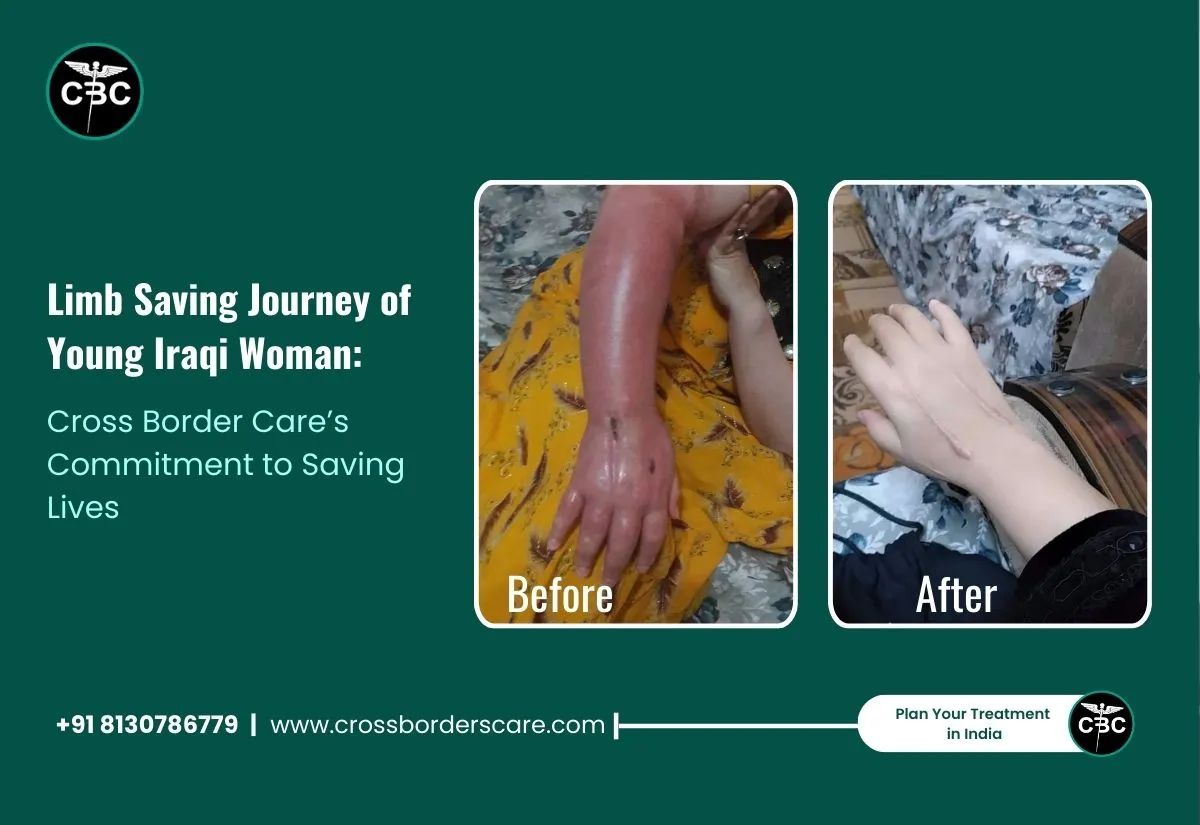Looking for Pancreatic cancer treatment in India? Read this blog, as all your worries are going to fade away soon!!
Pancreatic cancer is one of the most aggressive forms of cancer, and getting timely, expert treatment can make all the difference. However, for many international patients—mainly from Africa, the Middle East, and Eastern Europe—accessing advanced pancreatic cancer treatment locally can be both limited and prohibitively expensive.
India, specifically Indraprastha Apollo Hospital in Delhi, is the top pancreatic cancer hospital in India that provides affordable cancer treatment in India. One of the leading names in gastrointestinal and pancreatic cancer surgery is Dr. Deepak Govil, a senior surgical gastroenterologist with decades of experience.
Here’s how international patients can get treated by Dr Govil without any waiting time by taking the help of Cross Border Care, a trusted medical consultant in India.
Pancreatic Cancer Treatment in India: Why Choose Dr. Deepak Govil and Indraprastha Apollo Hospital?
- Global Expertise: Dr. Deepak Govil, a top pancreatic cancer doctor in India, is the Director of Surgical Gastroenterology at Indraprastha Apollo Hospital, Delhi, and is well-known for complex pancreatic surgeries like Whipple’s procedure.
- Advanced Technology: Apollo Hospitals uses the latest surgical and diagnostic equipment, including robotic surgery, high-end imaging, and precision radiotherapy for pancreatic cancer treatment in India.
- Multidisciplinary Cancer Board: Your case will be reviewed by a team of oncologists, radiologists, gastroenterologists, and surgeons to carve out the best treatment plan for you.
- Cost Advantage: The total cost of pancreatic cancer surgery in India can be 50–70% lower compared to the U.S., UK, or Europe.
How to Get Pancreatic Cancer Treatment in India?
International patients looking to get cancer treatment in India often face the most common problem of how they can avail the best treatment away from their country. To help them in every step of the way, they need a trusted partner who can be there with them all the time and take of their needs, like appointments with a doctor, arranging a hotel room for them, and helping them with tests and treatments.
Cross Border Care bridges the gap between international patients and top Indian hospitals like Indraprastha Apollo Hospital Delhi. Here’s a realistic, step-by-step journey you might go through:
Step 1: Share Your Reports
Once you or your loved one receives a pancreatic cancer diagnosis, and by any chance you happen to find our website, you can email all your test reports (CT scans, biopsy, etc.) to Cross Border Care. The reports will directly reach Dr Nadeem Khan, and from there, he will take your case further to Dr. Govil. Their medical team ensures that Dr. Govil reviews your case directly.
Step 2: Video Consultation (Optional)
Before flying to India, you can choose to have a detailed one-to-one consultation with Dr. Govil through Cross Border Care. This helps you understand your treatment options and build trust with the doctor. This will help you know what treatment options you will get in India and what will be the best course of action in your case.
Step 3: Visa and Travel Assistance
Once everything is sorted, trust is built. Cross Border Care will help you with a medical visa invitation letter from Indraprastha Apollo Hospital, which makes your Indian visa approval faster and easier. We will also guide you through flight booking, airport pickup, and accommodation near Apollo Delhi.
Step 4: Arrival and Admission
Upon your arrival in Delhi, Dr Nadeem Khan will meet you at the airport and accompany you. Have some refreshments with him, check-in at your hotel, and then he will arrange the earliest appointment at Indraprastha Apollo Hospital. You will be under Dr. Deepak Govil’s care, where, after your admission to the hospital, diagnostic tests like PET-CT, tumor markers, and blood panels are repeated to confirm staging.
Step 5: Surgery and Recovery
If you’re eligible for pancreatic cancer surgery in India (e.g., Whipple procedure or distal pancreatectomy), Dr. Deepak Govil and his team perform it at Indraprastha Apollo using advanced, minimally invasive techniques where possible. For inoperable tumors, chemo or radiotherapy will be used. Treatment options will be discussed in detail with you and your caregivers.
Post-op recovery typically takes 7–10 days in the hospital. You are supported by dieticians, physiotherapists, and Cross Border Care’s on-ground support staff.
Step 6: Discharge and Return
Once fit to travel, your reports and follow-up instructions are handed over. Cross Border Care helps with discounted hotel stays, local transport, and follow-ups via video calls after you return to your country.
What is the cost of Pancreatic Cancer Treatment in India?
| Cost Component | Direct (Self-Managed) | Via Cross Border Care | Remarks |
| Initial Consultation (Dr. Govil) | $15 – $20 | $15 – $20 | CBC arranges video consults + scheduling |
| Advanced Diagnostic Tests (PET-CT, Biopsy, Tumor Markers, etc.) | $1,200 – $1,800 | $1,000 | CBC negotiates bundled diagnostic packages |
| Surgery (Whipple / Pancreatectomy) | $11,000 – $12,000 | $9,000 – $10,500 | CBC negotiates costs directly with the hospital |
| Hospital Stay (7–10 days) | $2,500 – $3,500 | Included in the surgery package | CBC ensures priority room booking |
| Medicines + Consumables (Inpatient) | $1,500 – $2,200 | Included in the surgery package | CBC helps in generic substitution wherever possible |
| Chemotherapy (6 cycles) | $3,500 – $5,000 | $3,000 – $4,000 | CBC helps with discounted drug sourcing |
| Hotel Stay (30 days) | $600 – $800 | $300 – $400 | CBC arranges discounted guesthouses/apartments near Apollo |
| Daily Meals & Local Transport | $500 – $800 | Complementary | CBC provides local transport + meal guidance |
| Interpreter / Translation Services | Not included | Complementary | Arabic, French, Swahili, etc. |
| Medical Visa Assistance | Self-apply ($100+) | Complementary | Faster approval with a hospital letter |
| Post-Op Teleconsultation (2–3 visits) | $200 – $300 | Complementary | CBC arranges follow-ups |
| On-Ground Coordinator (24/7) | Not available | Included | CBC provides a dedicated case manager |
| Emergency Support + Transfers | Paid separately | Included | CBC has ambulance/taxi partners |
| Total Estimated Cost (Full Package) | $20,700 – $26,400 | $15,500 – $19,800 | You save approx. $5,000 – $6,500 using CBC |
Why International Patients Trust Cross-Border Care
- No hidden charges
- On-ground support in your language
- Follow-ups even after you return home
- Trusted by over 5,000+ international patients
- Read real testimonials on our website or visit our YouTube channel.
FAQs on Traveling to India for Cancer Care
Is it safe to travel to India for cancer treatment, like pancreatic surgery?
Yes. India has NABH-accredited hospitals and internationally trained doctors. The success rate of pancreatic surgery in India is relatively high.
How long will I need to stay in India for pancreatic cancer treatment
Expect around 3–4 weeks for complete workup, surgery, recovery, and planning further treatment.
Can I talk to someone who has already undergone surgery in India?
Yes. Cross Border Care can connect you with past patients who are willing to share their experiences.
What if I need chemotherapy after surgery?
You can either stay back or return to your home country. Dr. Govil’s team provides a detailed chemo plan and remote support.
Book your Consultation Today
Need help now? Reach out to Cross Border Care to speak with Dr Nadeem Khan and get a free case review from Dr. Deepak Govil at Indraprastha Apollo Hospital.













